New Zealand
Things to DO
Auckland
The isthmus on which Auckland sits was first settled 1350 AD and was valued for its rich and fertile land.
The Māori population in the area is estimated to have peaked at 20.000 before the arrival of Europeans.
After a British colony was established in New Zealand in 1840, William Hobson, then Lieutenant-Governor of New Zealand,
chose Auckland as its new capital.He named the area for George Eden, Earl of Auckland, British First Lord of the Admiralty.
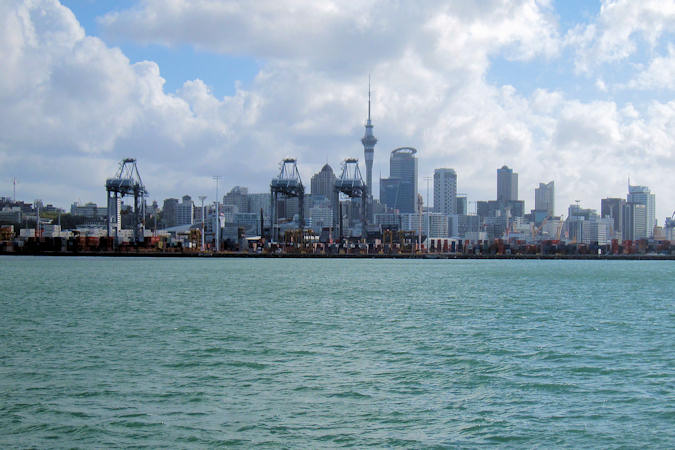 |
|||||
In 1865, Auckland was replaced by Wellington as the capital, but continued to grow, initially because of its port and the logging
and gold-mining activities in its hinterland.
It has been the nation's largest city throughout most of its history. Today, Auckland's central business district is New Zealand's
leading economic hub.
The impossible-to-miss Sky Tower looks like a giant hypodermic giving a fix to the heavens. Spectacular lighting renders
it space age at night and the colours change for special events. At 328m it is the southern hemisphere's tallest structure.
St Matthew-in-the-City; The beautiful neo-Gothic stone church has European and medieval features, and is the only church of
its kind in New Zealand with vaulted stone ceilings.
St Matthew’s has occupied the same central city site since 1848, and the current stone church was built in 1905.
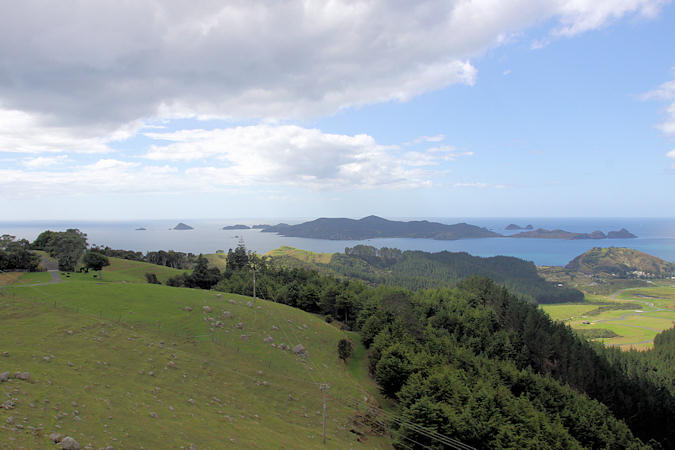 |
|||||
Stretching north-east of Auckland, the Hauraki Gulf covers 1.2 million hectares of ocean. The gulf is part of the
Pacific Ocean, which it joins to the north and east. It is largely protected from the Pacific by Great Barrier Island and by
the 80-kilometre-long Coromandel Peninsula to the east. It is thus well protected against all but northern winds.
It is one of New Zealand’s most valued and intensively used resources – for food gathering, recreation and conservation.
The Hauraki Gulf is home to a rich diversity of seabirds, whales, dolphins, fisheries, and unique undersea habitats. It contains
important nature sanctuaries, five marine reserves and more than 50 islands.
In 2000, it was designated New Zealand's first marine park, due to its national significance.
Mahuki Island, on Great Barrier Island’s west coast holds the largest gannet colony of the Gulf
Tiritiri Matangi Island is a wildlife sanctuary and one of New Zealand's most important and exciting conservation
projects. It is located 30km north east of central Auckland.
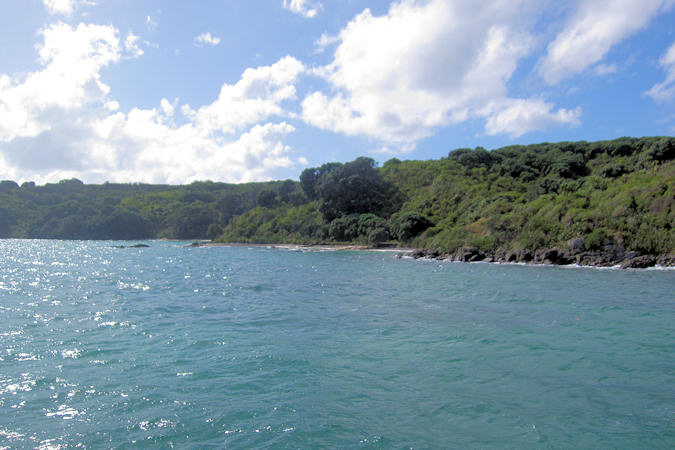 |
|||||
The island was sold to the Crown in 1841, deforested and farmed until the 1970's.
Since 1984 hundreds of volunteers have planted between 250.000 and 300.000 native trees and the forest cover has generated.
The Island is now 60% forested with the remaining 40% left as grassland for species preferring open habitat.
In conjunction with this planting programme, all mammalian predators were eradicated and a number of threatened and endangered
bird species have been successfully introduced, including the flightless Takahe, one of the world’s rarest
species. There are few places in New Zealand where you can readily see and walk amongst so many rare species.
A 1864 lighthouse stands on the eastern end of the island.
These are pictures
of the nature of the Huraki Gulf and Tiritiri Matangi Island.
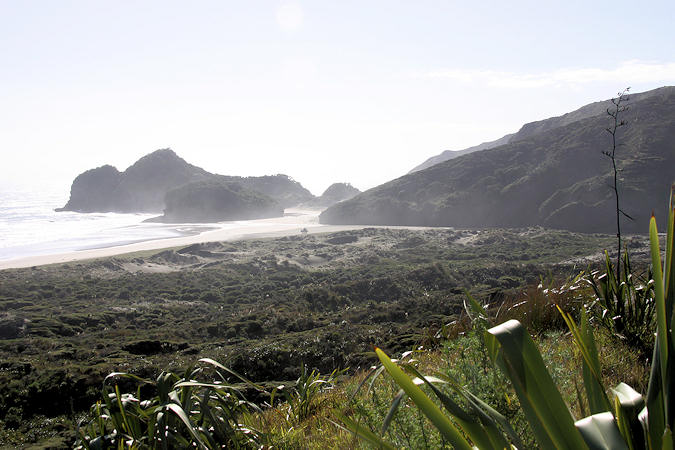 |
|||||
Bethells Beach is an isolated beach situated 30 kilometers northwest of Auckland at the mouth of the
Waitakere River where it flows into the Tasman Sea. Its distinctive volcanic black sand complements craggy shoreline lined
with lush native bush.
Swimming and surfing conditions can be very dangerous at Bethells, as there are often rips. Only confident swimmers should tackle
the waves. You can stroll along trails that branch in different directions through the sand dunes and bush.
One of the best things to do in Bethells Beach is a two kilometres hike to Lake Wainamu.
You can choose to walk over the dunes or skirt around them through the stream. Over the crest of the sand dunes you get a great
view of the lake.
Kerikeri
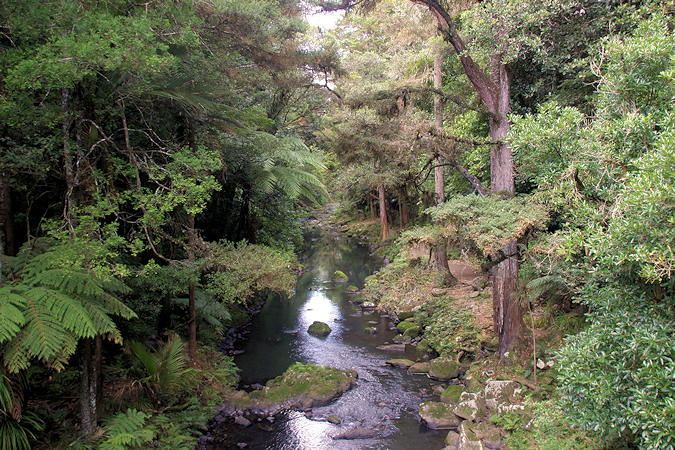 |
|||||
About 80 km south of Kerikeri are the Whangarei Falls.
This picturesque waterfall is 26.3m high and cascades over basalt cliffs. The two viewing platforms above the waterfall give
spectacular views of the falls and the forest below.
The Northland town of Kerikeri has a long, colourful history. The area was home ground for the fearsome Maori chief
Hongi Hika, who terrorised many tribes throughout the North Island in the early 1800s. Yet he was kind to missionaries,
allowing Samuel Marsden in 1814 to establish New Zealand's second mission station here.
The Pererua Peninsula, about 20 km north off Kerikeri is the perfect spot to find the North Island Brown Kiwi.
The Brown Kiwi have disappeared from many lowland sites and around the fringes of their distribution, through a combination of
habitat loss and predation by mammalian predators, especially dogs, ferrets and stoats. The the estimated population is about 25.000
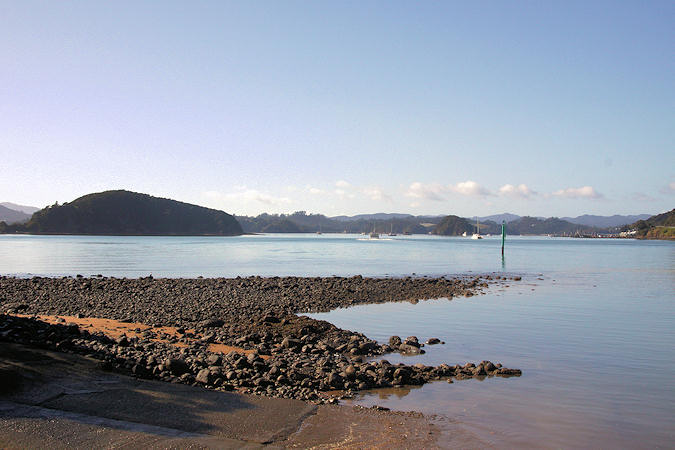 |
|||||
Paihia, about 23 km south-east of Kerikeri is best known as a gateway to the dive sites and sandy beaches of
the Bay of Islands.
Its name is said to be a mix of Mãori and English "pai" (good); "hia" (here).
The characterful St. Paul's Anglican Church was constructed of Kawakawa stone in 1925 and stands on the site of the original
mission church, a simple raupo (bulrush) but erected in 1823.
A walking track along the Waitangi River leads to to the Haruru Falls. Haruru means "big noise" in Māori and during
the north's heavy rains, the place quickly turns into a torrent of raging water. On sunnier days the amount of water cascading down
is still impressive.
Matauri Bay is situated 30 km north of Kerikeri. It has over a kilometre of white sand and crystal clear water, making it
a popular summer destinations for surfers, divers, fishers and holidaymakers.
Taupõ
New Zealand's largest lake, Lake Taupõ sits in the caldera of a vulcano that began erupting about 300.000 years ago,
with a very large event known as the "Oruanui eruption" occurring 26,500 years ago. It was the world's largest known
eruption over the past 70.000 years, ejecting 1170 cubic kilometres of material and causing several hundred square kilometres
of surrounding land to collapse and form the caldera. The caldera later filled with water to form Lake Taupõ.
Several later eruptions occurred over the millennia before the most recent major eruption, known as the "Hatepe eruption",
in AD 180 which was the world's most violent eruption of the last 5.000 years, shooting enough ash into the atmosphere for
ancient Romans and Chinese to record unusual skies.
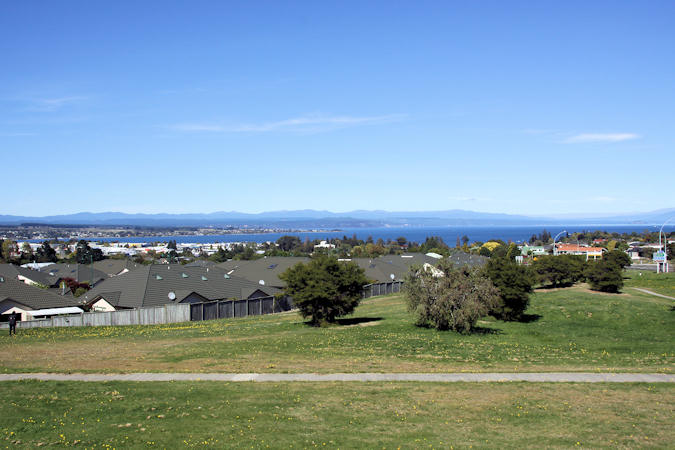 |
|||||
Taupō is located on the northeastern shore of the lake at its outlet into the Waikato River.
In the 20th century, the proliferation of the motorcar saw Taupõ grow from a lakeside village of about 750 people to a large resort
town, easily accessible from most points on the Norhern Island.
Today th e population increase considerably at peak holiday times, when New Zealanders and international visitors alike flock to
the "Great Lake".
Located 20 minutes' drive from Taupō township, Kinloch is a cosy settlement with spectacular views of Lake Taupō and the
mountains of Tongariro National Park.
Tokaanu was the major settlement at the south end of the lake. It remains home to a sizeable Māori population and was also
a mission settlement in the 19th century.
In the centre sits the little wooden St Pauls Anglican Church, built in 1909.
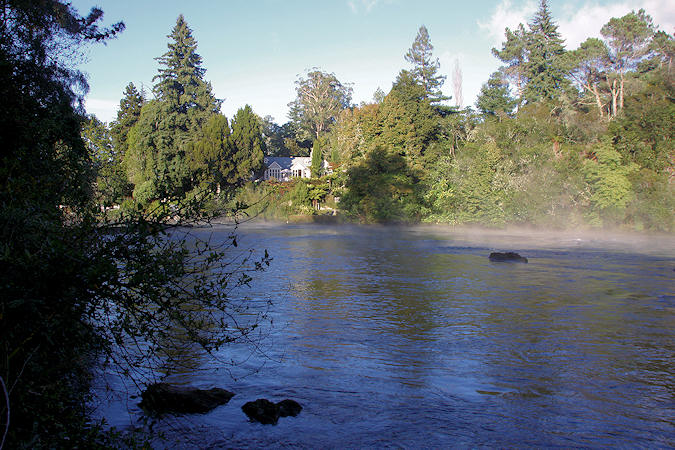 |
|||||
The Waikato River, New Zealand's longest river, moves gracefully north from Lake Taupō between banks 100 metres apart.
Just before the Huka Falls it enters a shallow ravine of hard volcanic rock only 15 metres across. The previously
placid waters roar and rumble at great speed along the ravine before bursting out over Huka Falls to crash into the turbulent
pool 11 metres below.
Due to the interference with the Wairakei Power Station extraction of geothermal water, the activity found in the Wairakei
Therminal Valley is ever changing.
Although the maximum temperatures in the area consistenly stay around the 100 degrees Celsius, landscape colours alter as the
mineral content of silica deposits change, cauldron activitie varies; bubbling mud pools disappear and reappear elsewhere.
A variety of mosses, lichen and ferns thrive in this unusually warm microclimate
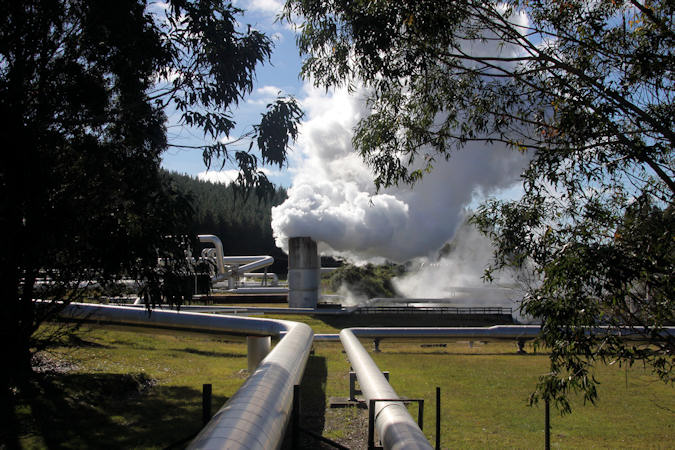 |
|||||
In the 1950s a large area of land north of Taupō suddenly began to get hot and emit steam. Craters of boiling mud
emerged, along with other geothermal phenomena. And so the Craters of the Moon was born.
The event was triggered by the lowering of underground water pressure by a nearby geothermal power station. Superheated water rose
to the surface, escaping through any vent it could find.
The gentle 2.7 km walk takes about 45 minutes and loops through a mass of steaming features.
Due to the somewhat poisonous fumes and the fact that ground temperatures around steam vents can reach dangerous levels, the paths
and board walkways that allow access to the field are relaid at irregular intervals to bypass them.